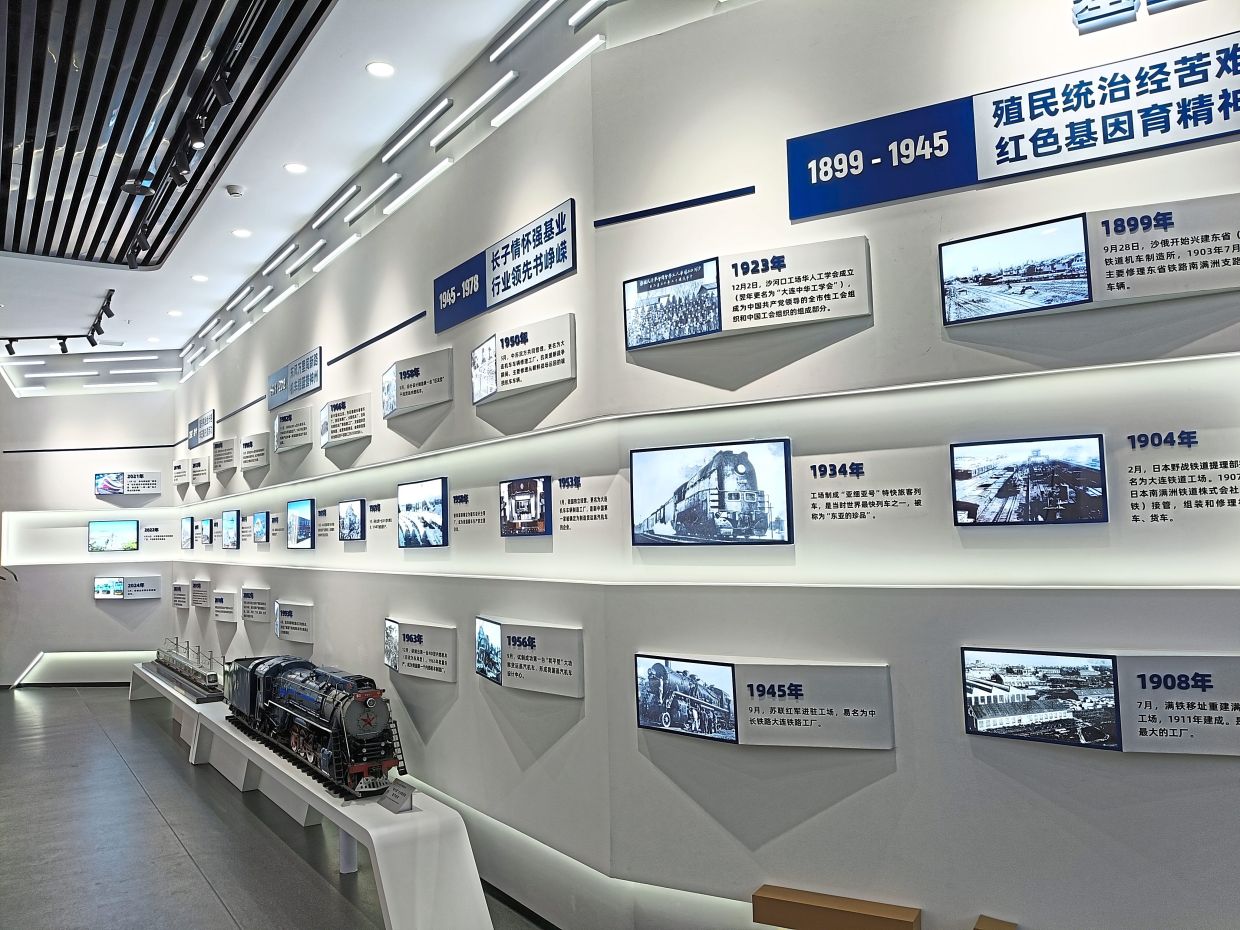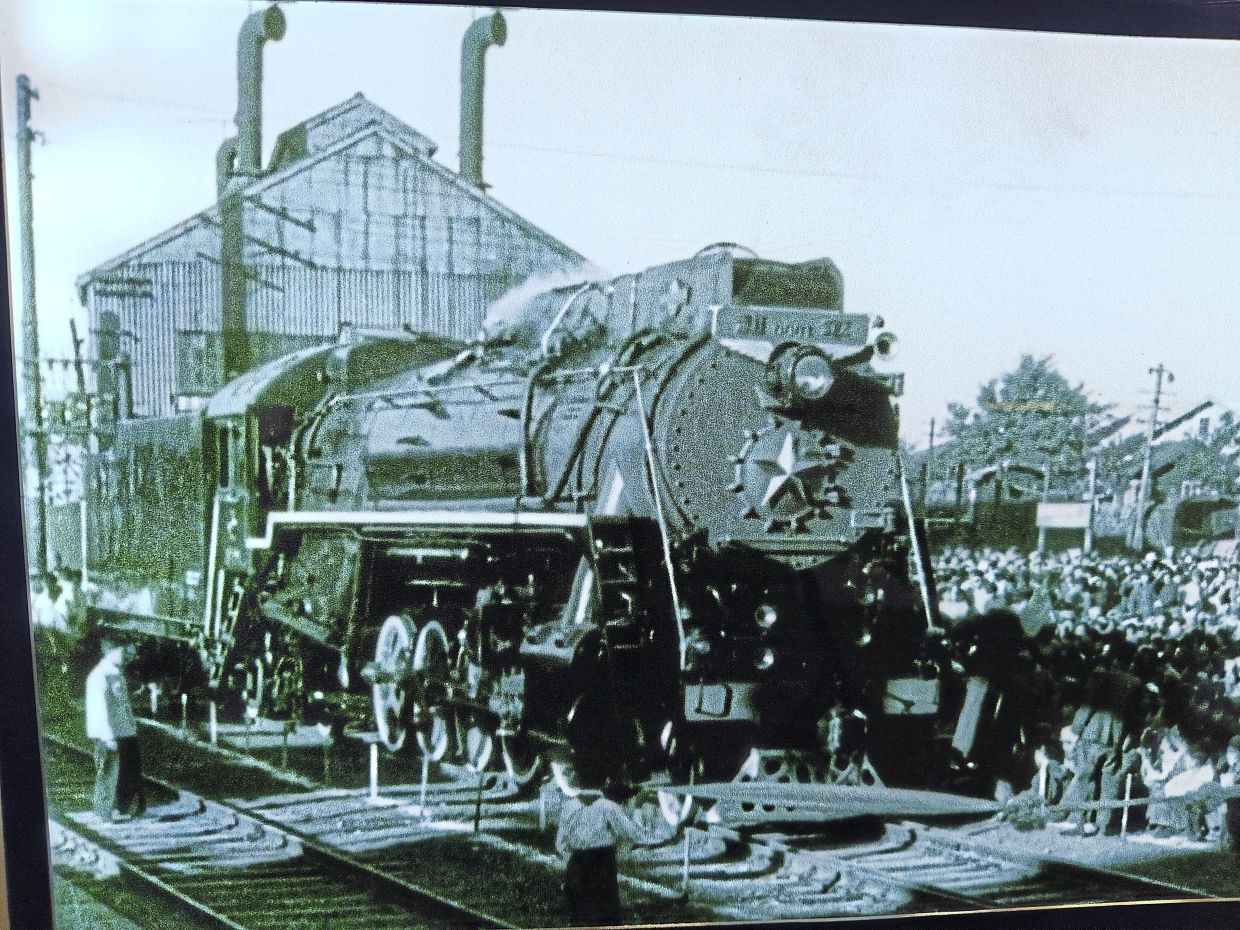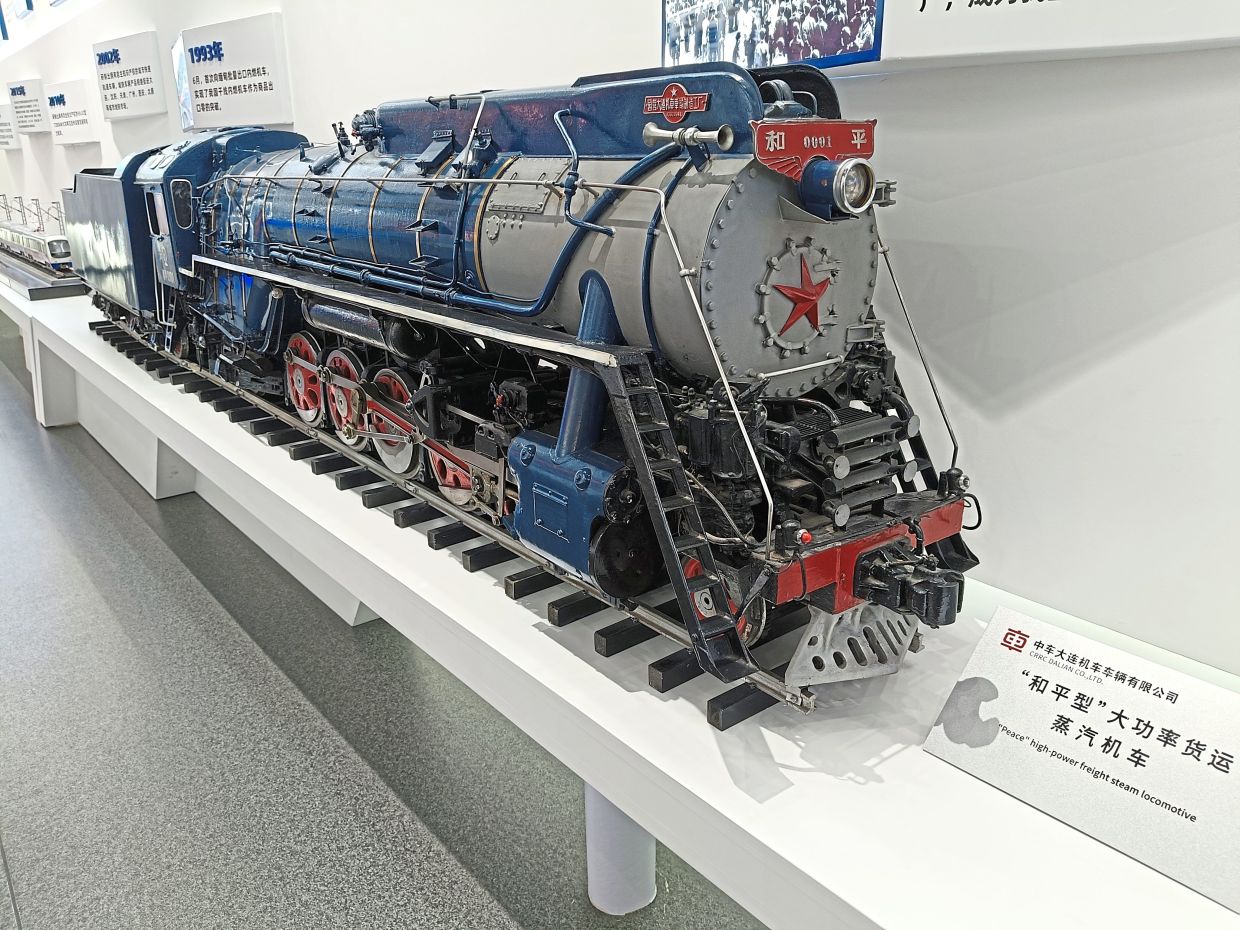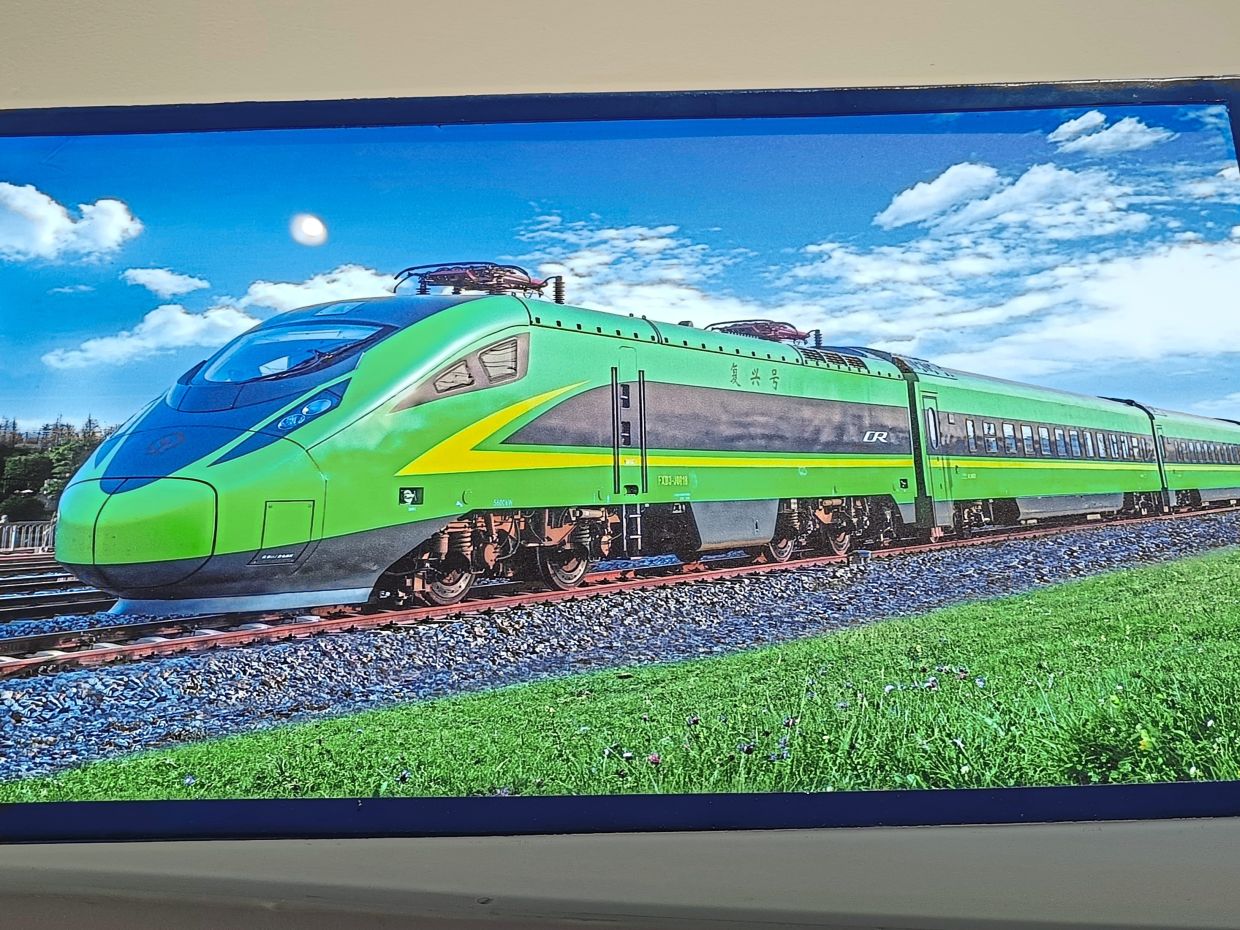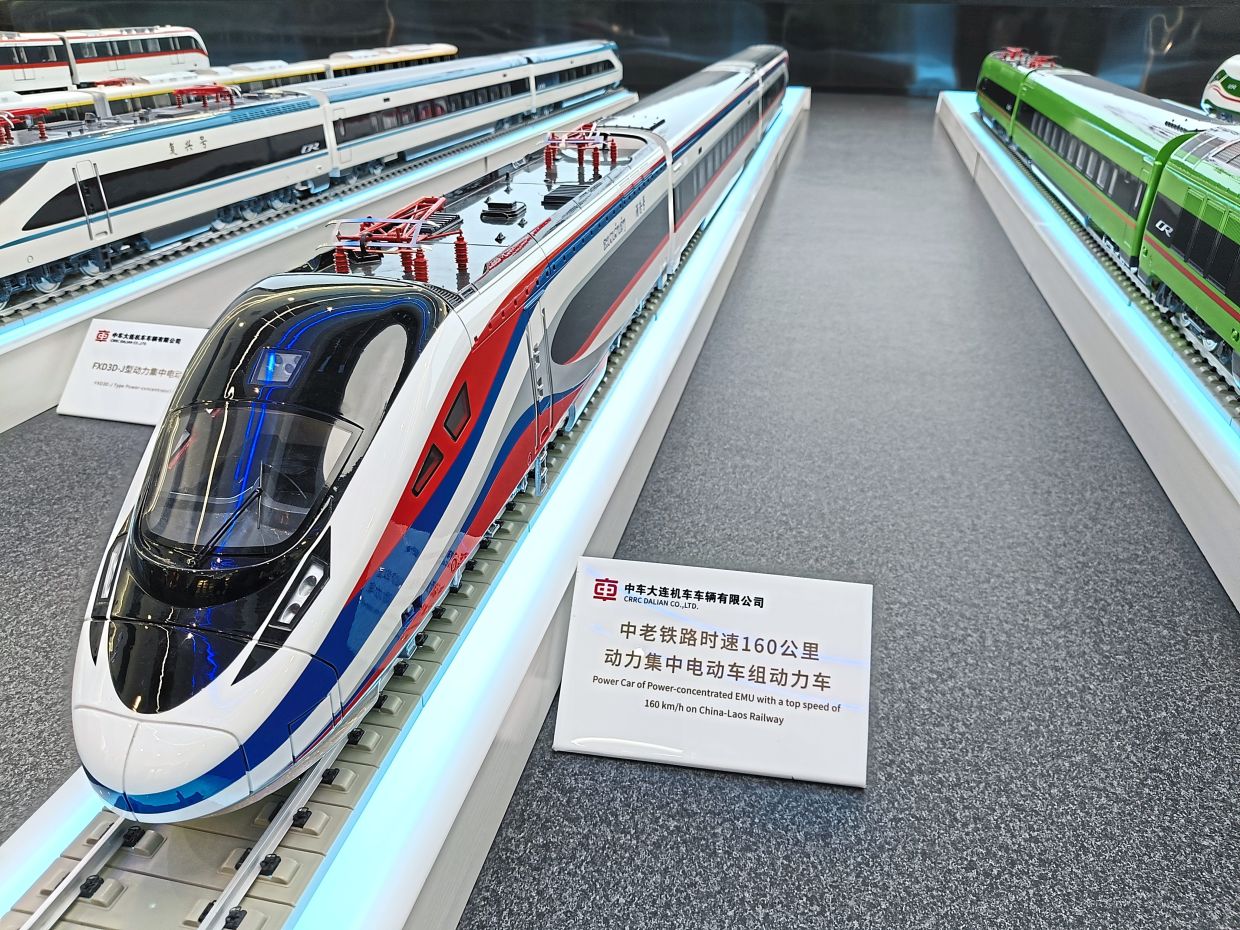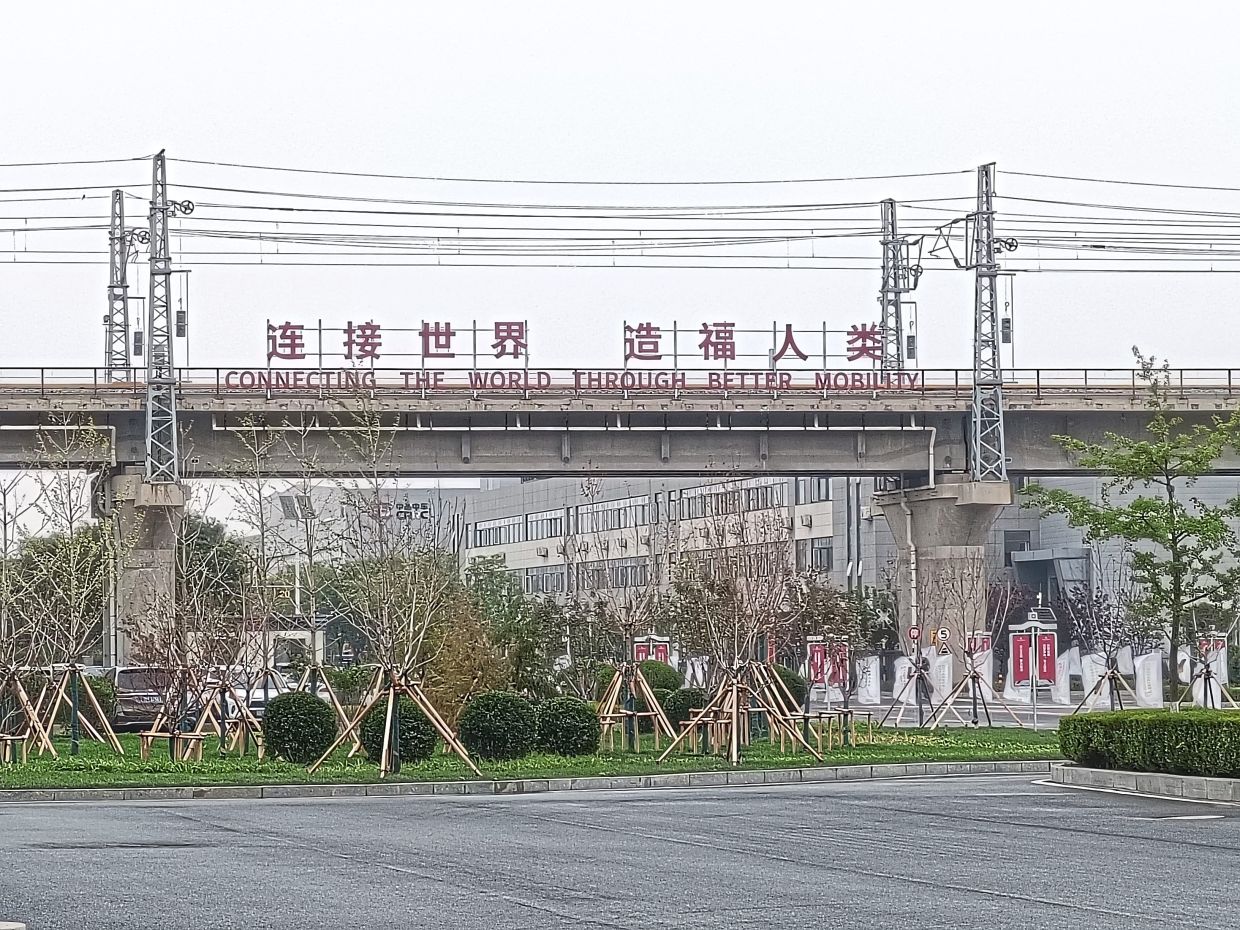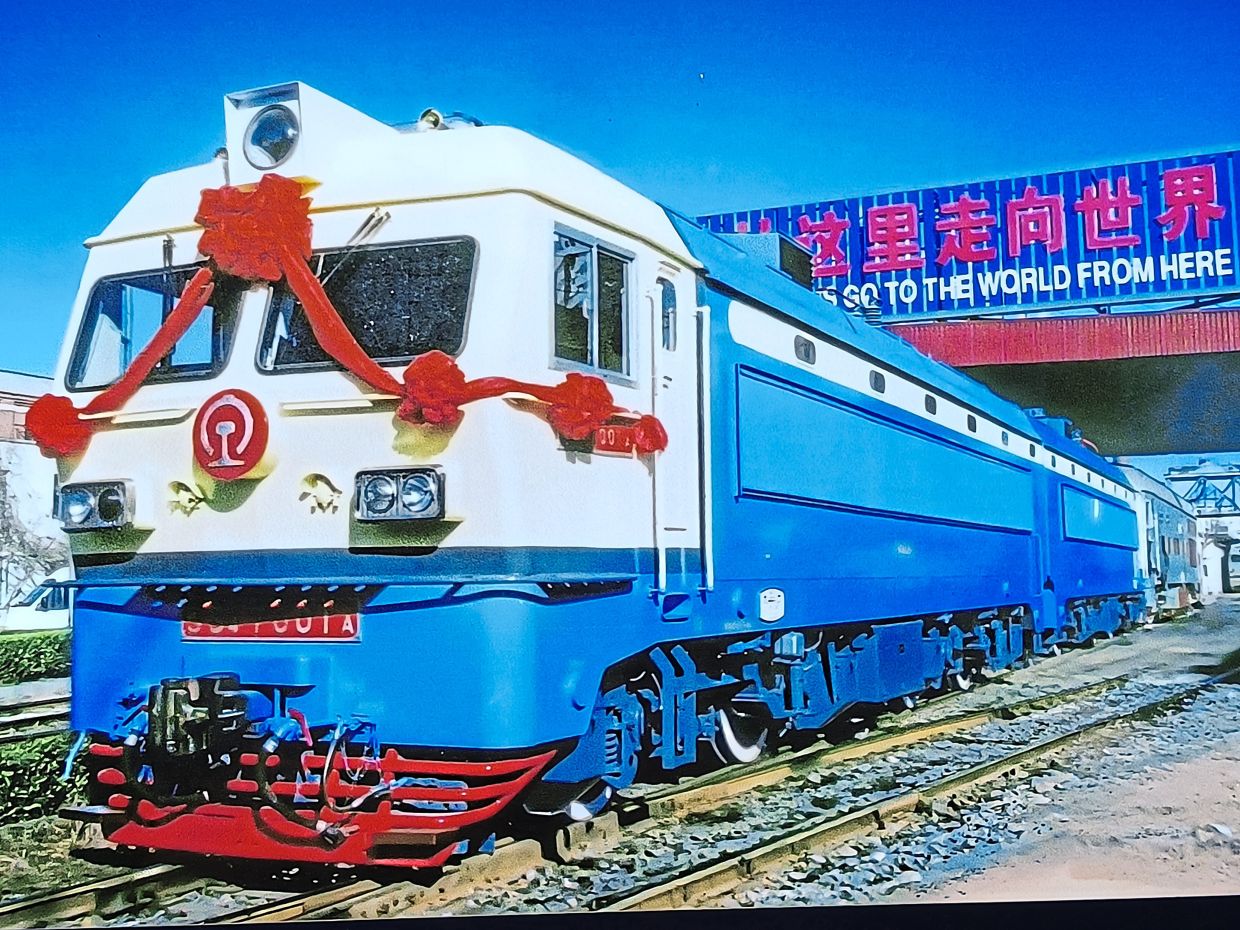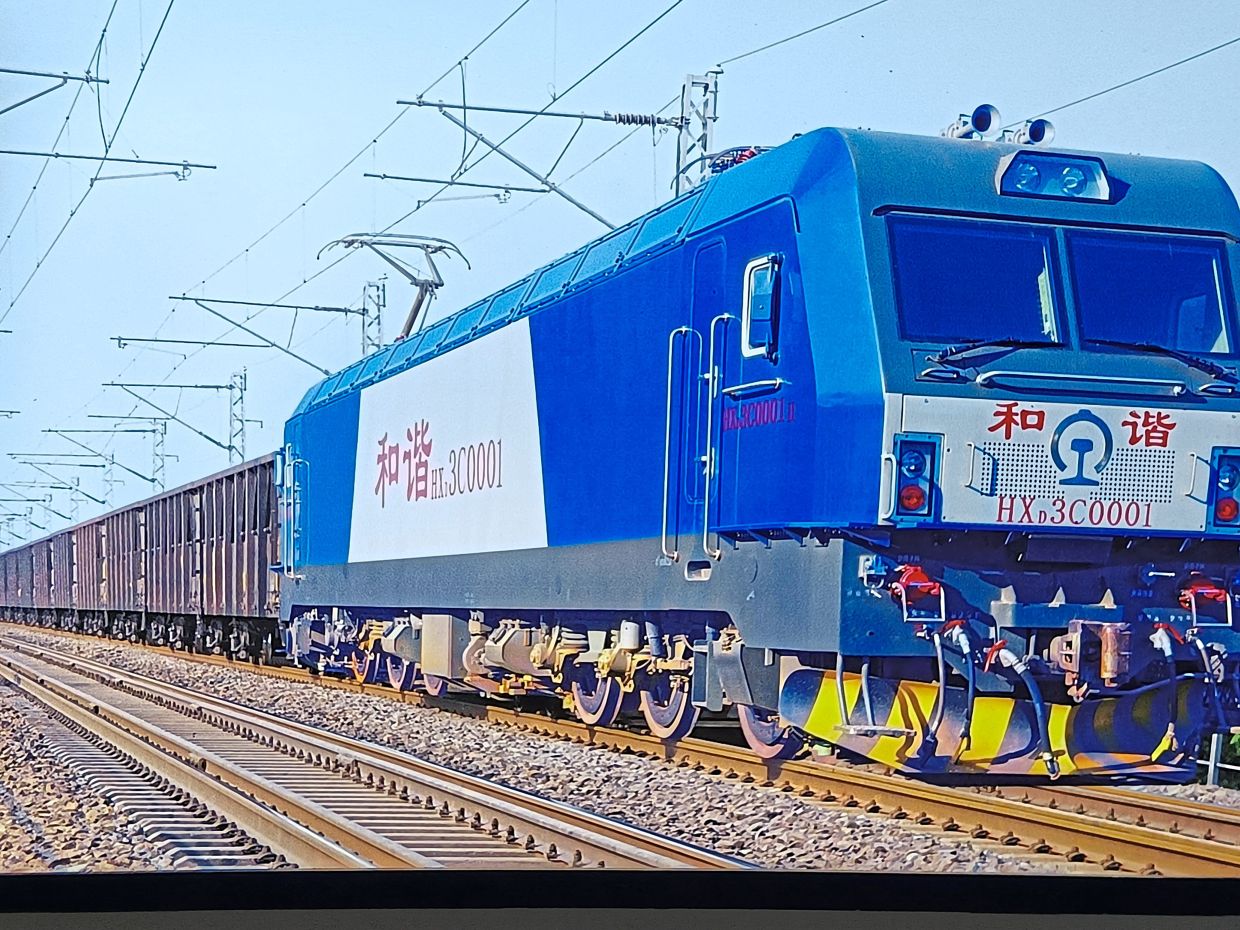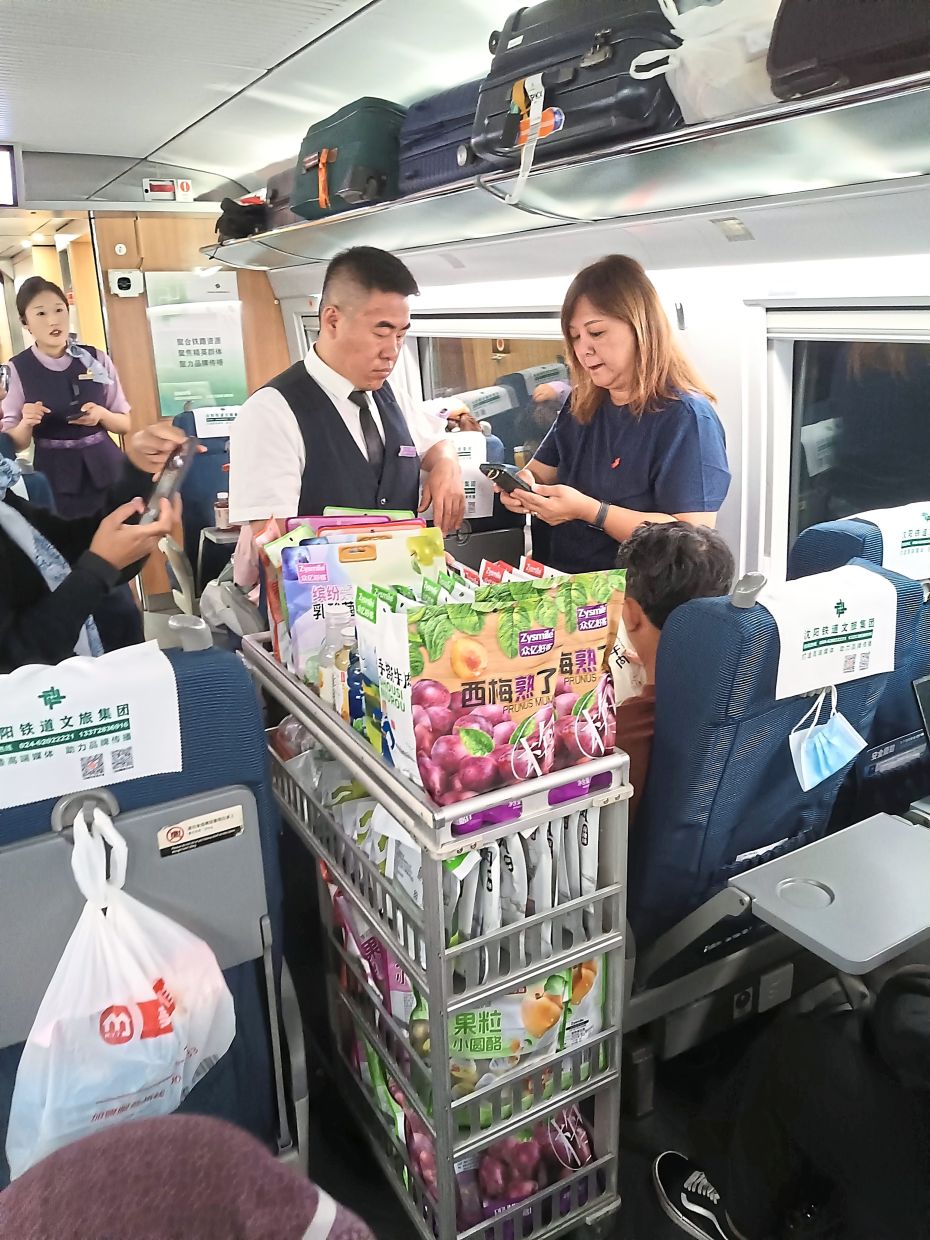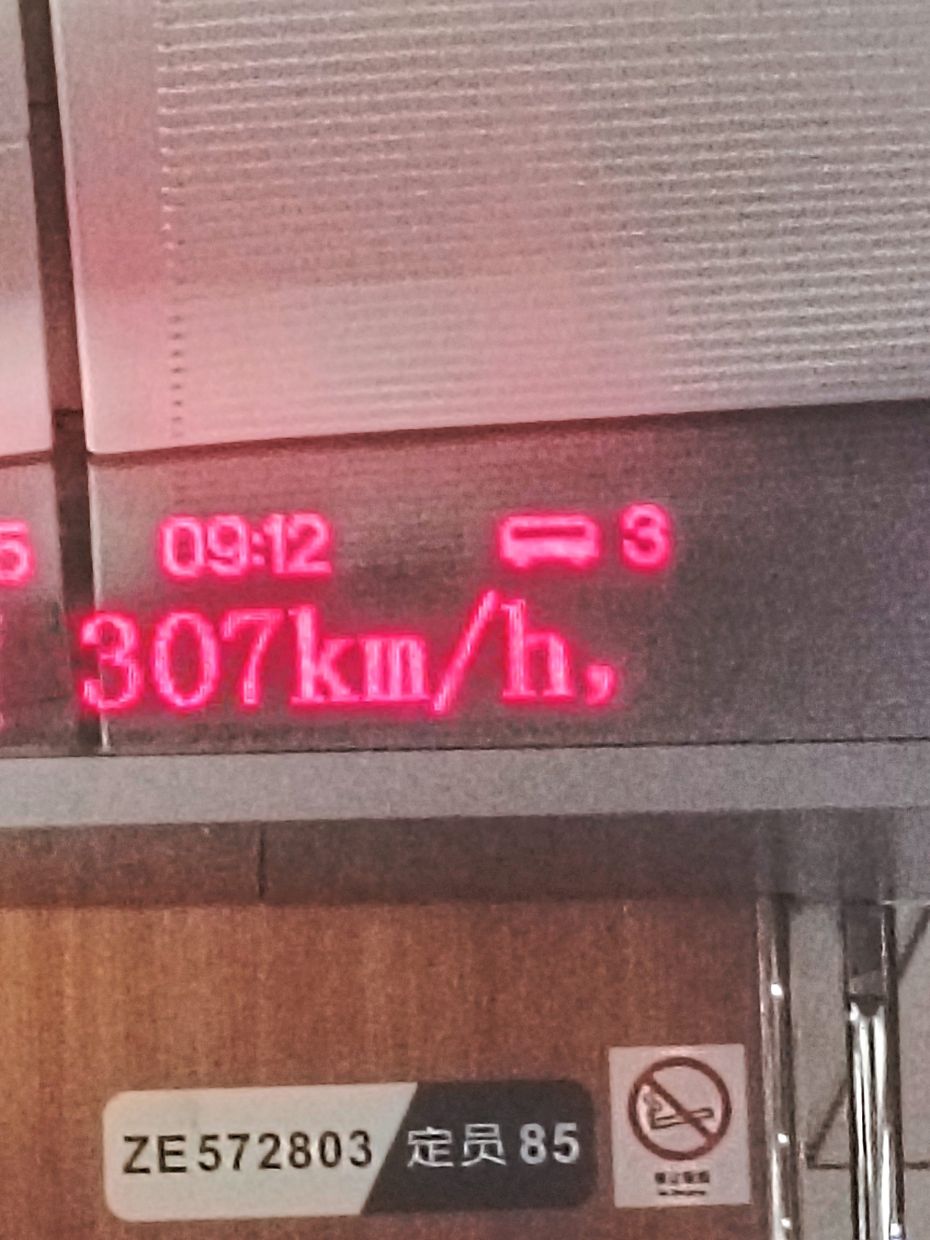Early days: In 1963, the Dongfeng diesel locomotive was developed, and the Dalian Locomotive and Rolling Stock Factory started mass producing it to cement its position as the first diesel locomotive manufacturer in China. — Pic provided by CRRC Dalian
THE first railway line in China met with an inglorious end in double quick time 160 years ago.
In 1865, a British merchant built a 600m demonstration railroad outside the Xuanwu Gate in Beijing to show the viability of rail to the imperial court of the Qing Dynasty, China’s last royal dynasty.
However, the court decided that it was too intrusive, loud, smoky, and even somewhat weird. Plus the royals held that the steam-driven locomotive and largely straight metal rails “messed with feng shui [geomancy]”, even though extensive railway networks were already in place in Europe, India, Japan, and the United States by then.
Failing to find any royal backing, the “intrusion” was removed shortly after.
However, this did not deter the entrepreneurial spirit of the time, and others made another attempt in Shanghai by opening a line between the city and Wusong in 1876 after building it quietly without authorisation.
Called the Woosung Road, this 15km stretch is recognised as the first railroad to operate commercially in China; it ran from the American Concession (present day Zhabei District) to Woosung (present day Baoshan District), with British trading firm Jardine, Matheson and Co in the driver’s seat.
However, even this relatively successful railway soon ran into political and social storms, and the Qing government purchased the line outright after objections from various stakeholders, before proceeding to dismantle it in October 1877.
Ironically, China did not have any problem with supporting the growth of railways elsewhere in the world as groups of migrant labour, mainly from the Guang-dong Province, were recruited to help build the Central Pacific Railroad in the United States in the 1860s.
The first railway to endure in China was the Kaiping Tramway and Imperial Railways of North China constructed by British engineer Claude William Kinder in 1881.
The 10km line from Tangshan to Xugezhuang was initially meant only to move coal from the coal mine in Tangshan but was extended to Tianjin in 1888, then Shanhaiguan and Suizhong in 1894. The line survived in part due to the backing of the Viceroy of Zhili, Li Hongzhang, who strenuously stood steadfast in the face of objections from conservative Qing ministers.
Rail continued to make inroads into China even though the final few decades of the 19th century proved to be immensely challenging for the Qing dynasty, with the government facing pressures from the growing population, natural disasters, and socioeconomic constraints.
The weakening of central control – albeit not its corrupt practices – was accompanied by popular unrest, severe floods, and famine, which culminated in the Taiping (1850-1864) and Nian (1853-1868) rebellions in the southern and northern areas of the kingdom, respectively.
With foreign powers eyeing various opportunities, it all provided the push for the first Opium War (1839-1842), the Anglo-French War (1856-1858), the Sino-Japanese War (1894-1895), and the Boxer Rebellion (1900), all resulting in unfavourable outcomes for China’s rulers as they were forced to grant concessions to various parties.
For example, in the late 19th century, Dalian, about 1,000km from the seat of power in Beijing, was annexed by Russia and Japan successively owing to the weakness of the Qing government, which was in terminal decline by then. The dynasty ended with the abdication of the last emperor of China, Puyi, in 1912.
Lines slowly growing
On March 27, 1898, Russia gained access to lease Dalian and Lushun ports by compelling the Qing government to grant it the right to build the Chinese Eastern Railway branch lines.
This led to the construction of the Eastern Railway Locomotive Manufacturing Plant (before it became the Dalian Works) starting in July 1899; it was completed in 1901.
In 1903, the Chinese Eastern Railway and its Locomotive Manufacturing Plant started operations, with the area turning into a hub for steam-powered locomotives.
Japan’s entry into the area formerly known as Manchuria led to the setting up of the South Manchuria Railway Company when it took over the plant on April 1, 1907. On July 8, 1908, it decided to relocate the plant to a new site in northern Shahekou on the outskirts of Dalian, and the plant was renamed the Manchuria Railway Shahekou Plant.
Following World War II and Japan’s surrender on Aug 15, 1945, the Shahekou Plant came under Soviet control for a period before it was returned to China in May 1950; it was then renamed the Zhongchang Railway Dalian Factory.
New beginnings
Since the founding of the People’s Republic of China in 1949 by Mao Zedong, the leadership has taken steps to make the country self-sufficient in rail by acquiring the ability to design and manufacture the entire rail ecosystem. The intention was to outgrow the old Dalian works and other associated facilities that could only repair steam locomotives.
In September 1956, the Zhong-chang Railway Dalian Factory successfully designed and manufactured China’s first main line steam locomotive, filling a huge void in domestic demand. All together, 977 units have been designed and manufactured within China, consisting of over 10 types of locomotives.
As it honed its craft in making steam locomotives, China also began experimenting with diesel beginning in the late 1950s.
In September 1958, the company designed and manufactured China’s first main line diesel locomotive, and decided to stop producing steam locomotives for commercial main line operations in 1961.
In September 1969, China unveiled its own designed and manufactured DF4 (Dongfeng) main line diesel locomotive for the domestic market. The transition from steam to diesel proved to be a rather steep learning curve, though, resulting in steam locomotives continuing to operate on some industrial and provincial lines.
The drive to go fully diesel took on greater momentum in the 1980s, with many more steam locomotives replaced on main lines during this period. By the 1990s, the electrification of railways as well as high-speed rail (HSR) entered the conversation, with emphasis on expanding the electric and HSR networks.
By 2004, a significant portion of the railway network was electrified, and planning for HSR began, though diesel locomotives continued to play a critical role, especially on the non-electrified lines as well as in other specialised applications.
By the turn of the last century, China was showing good progress in the concurrent strategy to refine diesel while developing its own competency in going electric.
The modernisation phase
The late 20th and early 21st centuries saw a rapid expansion of the rail network, with a focus on increasing both the total length and the proportion of electrified lines.
The development of HSR has been a major focus, particularly in the last two decades, with China now having the world’s largest HSR network. At last count, the total length of China’s operating HSR tracks had reached about 47,000km, according to a China Daily report last December that quoted China’s National Railway Administration.
This means the HSR network is nearly a third of China’s railway network that amounts to 162,000km.
A total of 3,000km of new tracks went into operation in 2024, with the number including about 2,300km of HSR.
China’s flagship bearer for all things rail is now the CRRC Corporation Ltd, a behemoth set up in June 2015 to bring together 46 wholly-owned and majority-owned subsidiaries with over 170,000 employees.
This includes CRRC Dalian Co Ltd, the manufacturer of Malaysia’s upcoming East Coast Rail Link (ECRL) that will run from Kota Baru to Port Klang via the east coast of Peninsular Malaysia by 2027.
Expanding globally
As a key state enterprise, CRRC’s portfolio spans the entire gamut of trains and support systems, from trams to metros to regional trains to HSR.
As the world’s largest supplier of rail transit equipment with the most comprehensive product lines, its main businesses cover the R&D, design, manufacture, repair, sale, lease, and technical services for rolling stock, urban rail transit vehicles, engineering machinery, all types of electrical equipment, electronic equipment and parts, electric products, and environmental protection equipment, as well as consulting services, industrial investment and management, and asset management, among others.
Dalian itself has been hailed by Chinese leaders as the “Cradle of Locomotives”.
As of October 2020, CRRC Dalian had produced 12,800 locomotives across more than 70 diesel and 13 electric models, accounting for half of China’s total locomotive fleet.
Since its first export of main line locomotives to Myanmar in 1993, CRRC Dalian has supplied rail vehicles to 27 countries, including Argentina, Hong Kong, India, Malaysia, New Zealand, Nigeria, South Africa, and Uzbekistan.
In recent years, it has expanded into urban rail exports to India, Iran, Nigeria, and the Philippines, making metro and light rail vehicles a pillar of its global strategy.
Beyond the ECRL, CRRC has an established footprint in Malaysia’s rail sector, having previously supplied rolling stock for KTM Bhd and the ETS intercity trains from Padang Besar in Perlis to Segamat in Johor.
Lessons for Malaysia
Assoc Prof Dr Chua Kein Huat, chair of Universiti Tunku Abdul Rahman’s (Utar) Centre for Railway Infrastructure and Engineering, said China’s rail advancements have set a global benchmark, transforming economies and enhancing regional integration.
“As Malaysia strives to modernise its own rail networks through projects like the ECRL and urban transit expansions, we deeply value China’s expertise in cutting-edge rail technology, efficient project execution, and sustainable infrastructure development.
“This milestone [the 160th anniversary] is a powerful reminder of rail’s role in driving progress, and we are keen to strengthen bilateral cooperation, leveraging China’s experience to accelerate Malaysia’s rail ambitions,” says Chua, adding that Utar and China’s Beijing Jiaotong University (BJTU) will co-organise an international rail conference on Aug 6.
BJTU has strong ties to the rail industry, particularly through its transportation and engineering programmes, and is known for its expertise in railway engineering and its collaborations with universities and organisations globally, including a significant partnership with Universiti Malaysia Pahang.
In a recent statement, CRRC said its longstanding presence in Malaysia shows there are ample opportunities for win-win partnerships.
“This repeated collaboration highlights CRRC’s role as a key supplier to Malaysia’s rail modernisation efforts, blending localised adaptations with Chinese rail technology.
“The ECRL contract further solidifies this partnership, integrating technology transfer and local workforce training – aligning with Malaysia’s aim to upgrade its rail industry through strategic foreign collaborations,” it said.
Former regulator of Malaysian rail, Yuslizar Daud, who used to head the Land Public Transport Commission’s Rail Division (until the commission was disbanded in 2019), shares a similar, albeit more critical, view of where Malaysia is heading.
“The top-down government approach in China does help to expand and deliver their railway network, including the HSR, efficiently. Key positions in the government are also helmed by engineers and technocrats, who typically have long-term perspectives [compared with politicians],” says the seasoned railwayman who has worked with several rail operators both in and out of Malaysia.
“Many years ago, I visited the CRRC Zhuzhou Locomotive Co, Ltd plant in China, and I was really impressed with the drive and professionalism of the manufacturer,” he says of China’s largest research and leading manufacturing enterprise of electric locomotives.
“They are very passionate in their work, take pride in the quality of their product. They persevere when facing challenges, and are very creative and innovative.
“More importantly, they challenge the norms set by their European counterparts or competitors,” says Yuslizar when asked what could possibly be China’s “secret sauce”.
He notes Chinese universities work closely with industry players in research and so on, whereas Malaysia universities tend to be too fixated on “outsmarting or going one-up on each other”.
“There is no visibility on any masterplan or road map in terms of results from the graduates,” he says.



